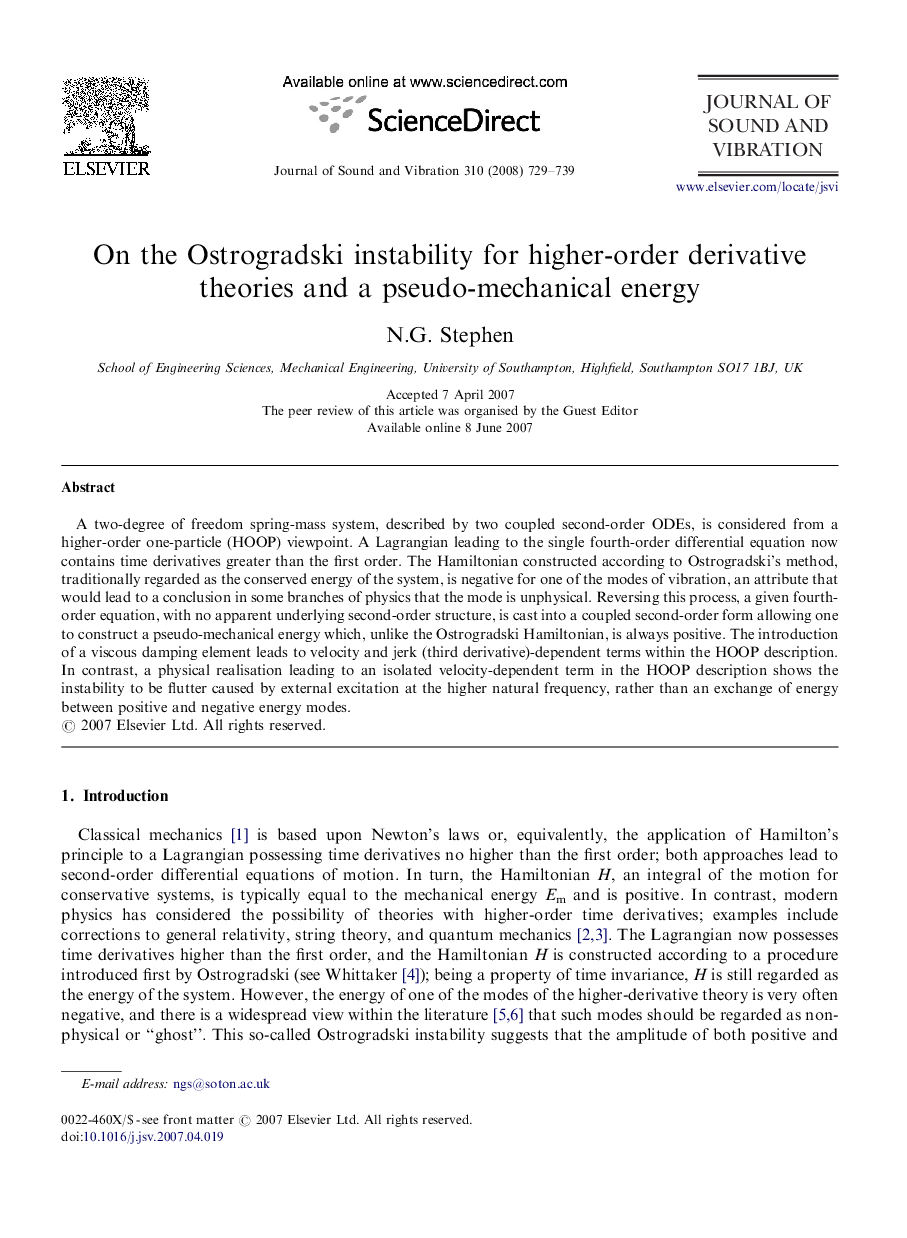| Article ID | Journal | Published Year | Pages | File Type |
|---|---|---|---|---|
| 291840 | Journal of Sound and Vibration | 2008 | 11 Pages |
A two-degree of freedom spring-mass system, described by two coupled second-order ODEs, is considered from a higher-order one-particle (HOOP) viewpoint. A Lagrangian leading to the single fourth-order differential equation now contains time derivatives greater than the first order. The Hamiltonian constructed according to Ostrogradski's method, traditionally regarded as the conserved energy of the system, is negative for one of the modes of vibration, an attribute that would lead to a conclusion in some branches of physics that the mode is unphysical. Reversing this process, a given fourth-order equation, with no apparent underlying second-order structure, is cast into a coupled second-order form allowing one to construct a pseudo-mechanical energy which, unlike the Ostrogradski Hamiltonian, is always positive. The introduction of a viscous damping element leads to velocity and jerk (third derivative)-dependent terms within the HOOP description. In contrast, a physical realisation leading to an isolated velocity-dependent term in the HOOP description shows the instability to be flutter caused by external excitation at the higher natural frequency, rather than an exchange of energy between positive and negative energy modes.
